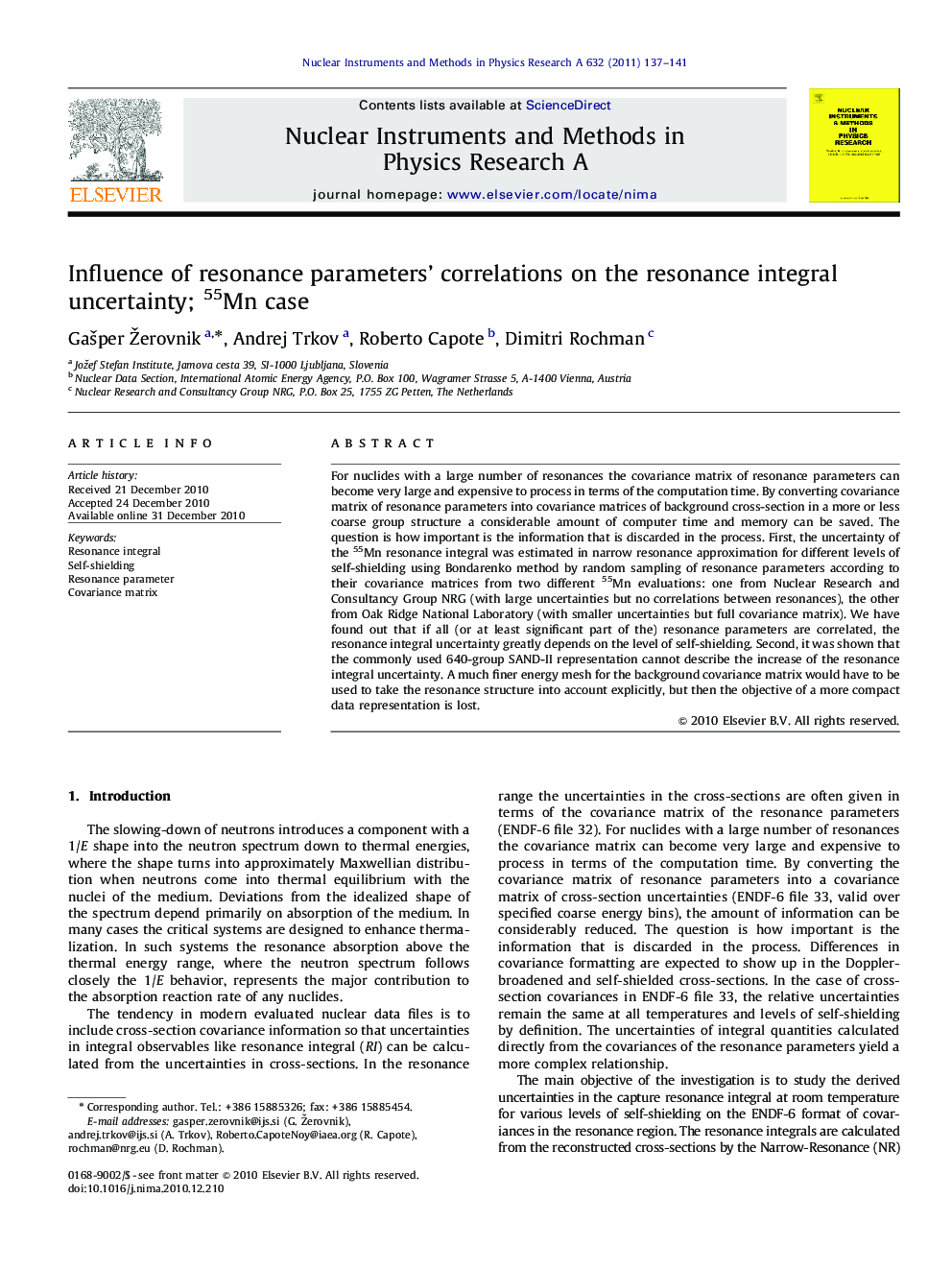| Article ID | Journal | Published Year | Pages | File Type |
|---|---|---|---|---|
| 1826268 | Nuclear Instruments and Methods in Physics Research Section A: Accelerators, Spectrometers, Detectors and Associated Equipment | 2011 | 5 Pages |
For nuclides with a large number of resonances the covariance matrix of resonance parameters can become very large and expensive to process in terms of the computation time. By converting covariance matrix of resonance parameters into covariance matrices of background cross-section in a more or less coarse group structure a considerable amount of computer time and memory can be saved. The question is how important is the information that is discarded in the process. First, the uncertainty of the 55Mn resonance integral was estimated in narrow resonance approximation for different levels of self-shielding using Bondarenko method by random sampling of resonance parameters according to their covariance matrices from two different 55Mn evaluations: one from Nuclear Research and Consultancy Group NRG (with large uncertainties but no correlations between resonances), the other from Oak Ridge National Laboratory (with smaller uncertainties but full covariance matrix). We have found out that if all (or at least significant part of the) resonance parameters are correlated, the resonance integral uncertainty greatly depends on the level of self-shielding. Second, it was shown that the commonly used 640-group SAND-II representation cannot describe the increase of the resonance integral uncertainty. A much finer energy mesh for the background covariance matrix would have to be used to take the resonance structure into account explicitly, but then the objective of a more compact data representation is lost.
